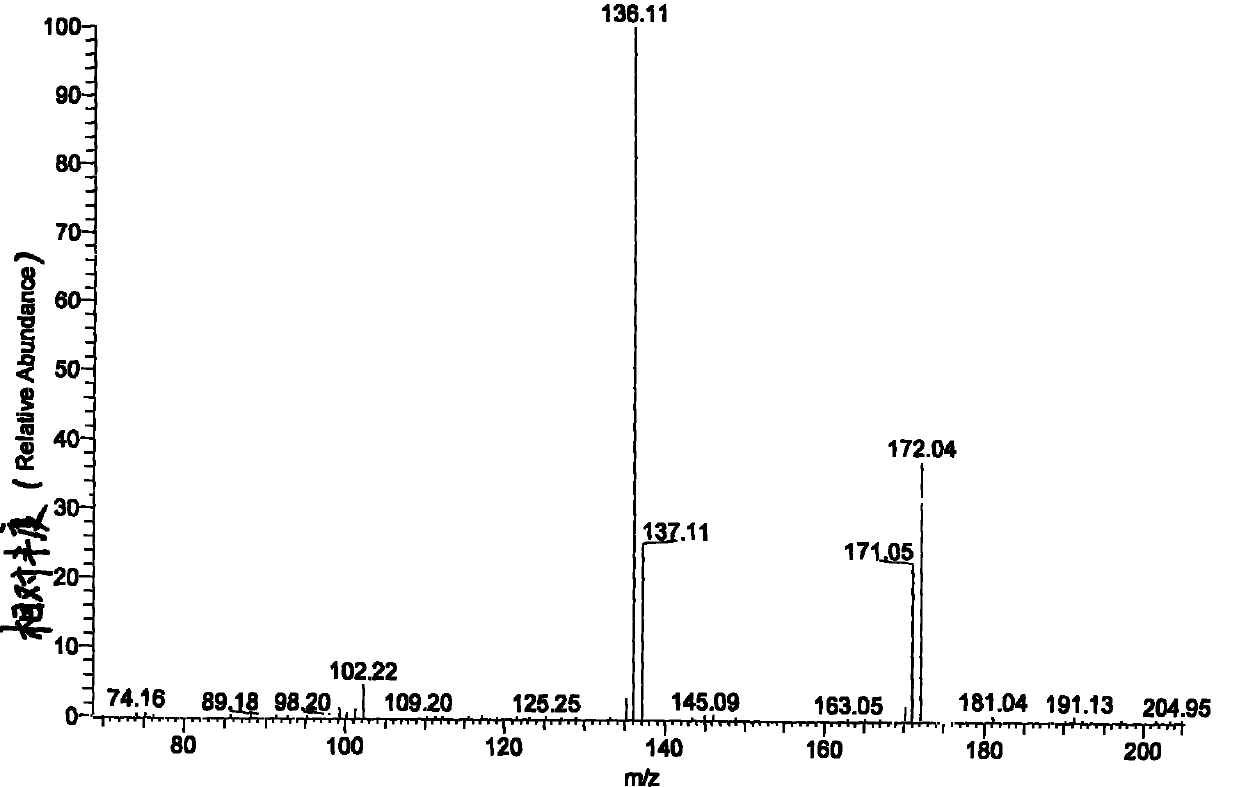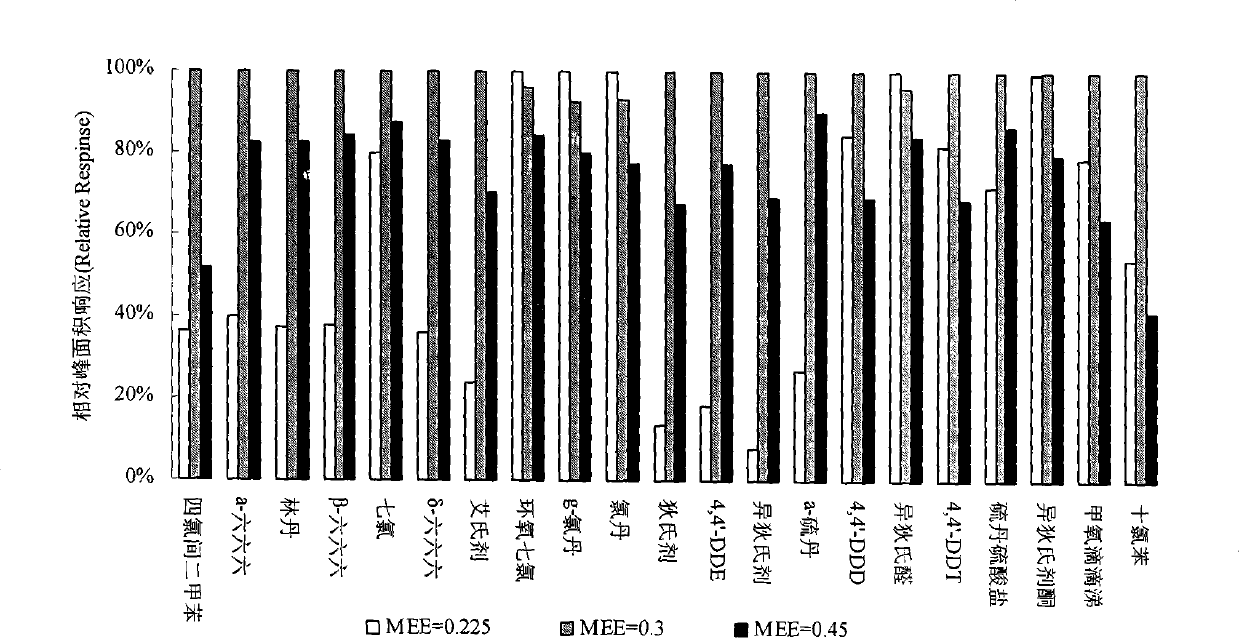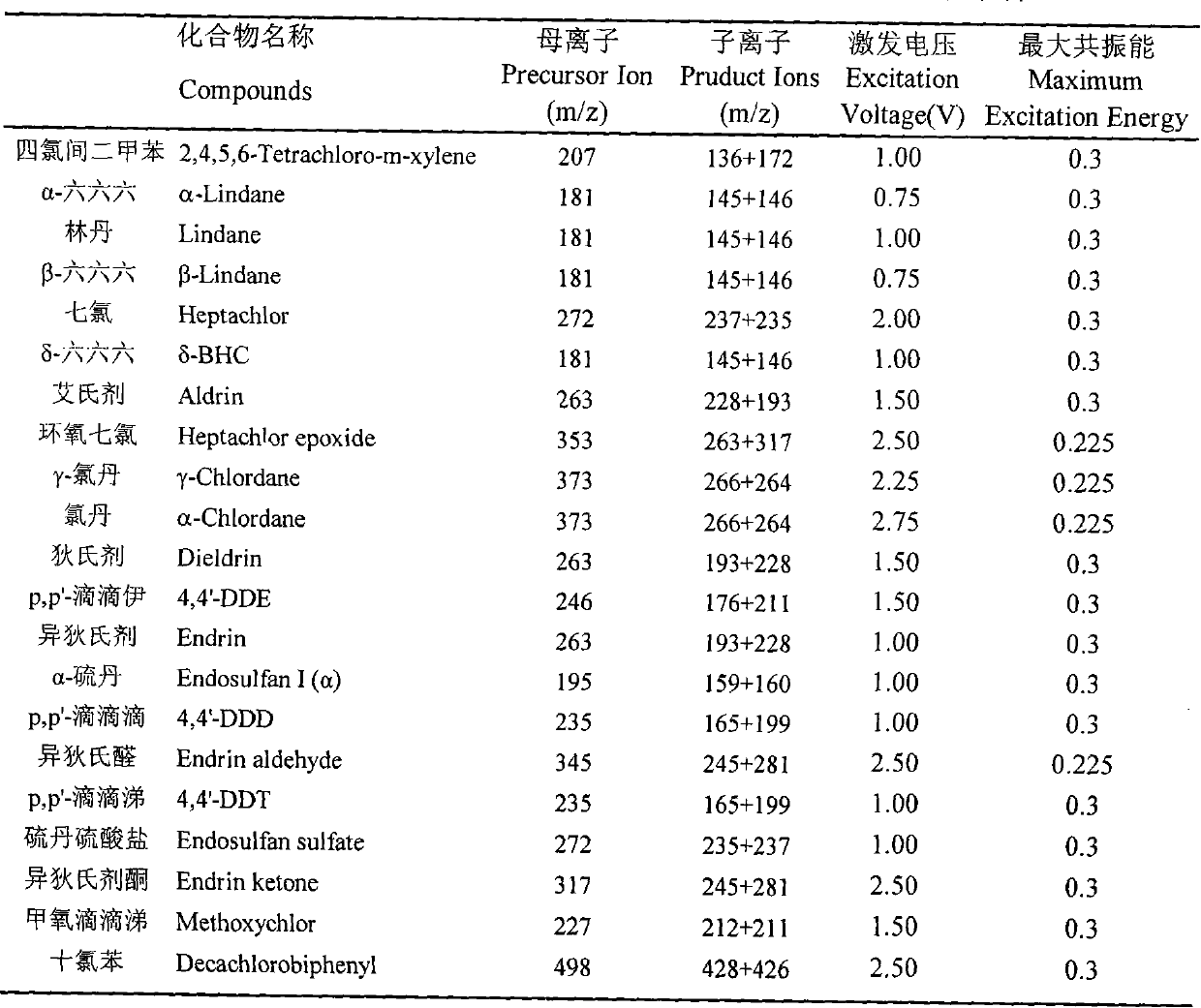Gas phase chromatogram- ion trap tandem mass spectrometry method for detecting organochlorine pesticide
A technology of tandem mass spectrometry and gas chromatography, which is applied in the field of rapid quantitative detection of target compounds of organochlorine pesticides, can solve the problems of time-consuming and labor-consuming pretreatment steps, low detection sensitivity, etc., and achieve low detection cost, high sensitivity, and improved Effect of Detection Sensitivity
- Summary
- Abstract
- Description
- Claims
- Application Information
AI Technical Summary
Problems solved by technology
Method used
Image
Examples
Embodiment 1
[0025] Embodiment 1: (chromatography, mass spectrometry conditions under initial condition)
[0026] (1) Configuration of standard solution: prepare 21 OCPs standard solutions (tetrachlorom-xylene, α-666, lindane, β-666, heptachlor, δ-666) with a concentration of 1000pg / μL 6. Aldrin, epoxy heptachlor, γ-chlordane, chlordane, dieldrin, p, p'-Didiyi, endrin, α-endosulfan, p, p'-dididi , endrin, p, p'-DDT, endosulfan sulfate, endrin ketone, methoxychlor, decachlorobenzene).
[0027] (2) Chromatographic conditions: the chromatographic column adopts DB-XLB chromatographic column, and the specification is 15mx0.25mmx0.25m. The temperature was programmed to rise to 100°C (hold for 2min), then to 175°C at 7.5°C / min, then to 220°C at 2.5°C / min, and finally to 270°C at 25°C / min (hold for 5min). Injection port temperature 250°C; splitless injection 1L. Helium (purity>99.999%) was used as the carrier gas with a flow rate of 1.0 mL / min (constant flow mode).
[0028] (3) Mass spectromet...
Embodiment 2
[0029] Embodiment 2: (optimize the secondary mass spectrometry condition: select parent ion, product ion)
[0030] (1) The concentration, chromatographic conditions, and mass spectrometry conditions of 21 kinds of organochlorine pesticide standard substances are the same as in Example 1;
[0031] (2) Secondary mass spectrometry (MS 2 ) Conditions: 21 kinds of OCPs standard substances of 1000pg / μL concentration were used in this embodiment
[0032] Operation under the chromatographic and mass spectrometry conditions in (1) obtains the corresponding primary mass spectrum (MS 1 ) spectrum, record the retention time (RT) of each target compound according to the peak order of the target compound in the chromatographic column, and select the characteristic ion peak with the highest abundance [M] + As the precursor ion in the MS / MS condition, the default parameter value of MEE is set to 0.3, the EV parameter value is set to 1.5V, and the two most abundant fragment ions in the fragm...
Embodiment 3
[0036] Embodiment 3: (optimize the secondary mass spectrometry condition: the optimization of MEE parameter)
[0037] (1) The concentration, chromatographic conditions, and mass spectrometry conditions of 21 kinds of organochlorine pesticide standard substances are the same as in Example 1:
[0038] (2) Secondary mass spectrometry (MS 2 ) conditions: refer to Example 2 (2) for the selection of parent ions and product ions of 21 organochlorine pesticide target compounds. Set the parameter value of MEE (maximum resonance energy) to 0.225, the parameter range of EV (dissociation voltage) from 0.25 to 3.5V with an interval of 0.25V, a total of 14 parameters, select 2 product ions as quantitative ions, and obtain The corresponding peak area for each compound;
PUM
 Login to View More
Login to View More Abstract
Description
Claims
Application Information
 Login to View More
Login to View More - R&D
- Intellectual Property
- Life Sciences
- Materials
- Tech Scout
- Unparalleled Data Quality
- Higher Quality Content
- 60% Fewer Hallucinations
Browse by: Latest US Patents, China's latest patents, Technical Efficacy Thesaurus, Application Domain, Technology Topic, Popular Technical Reports.
© 2025 PatSnap. All rights reserved.Legal|Privacy policy|Modern Slavery Act Transparency Statement|Sitemap|About US| Contact US: help@patsnap.com



